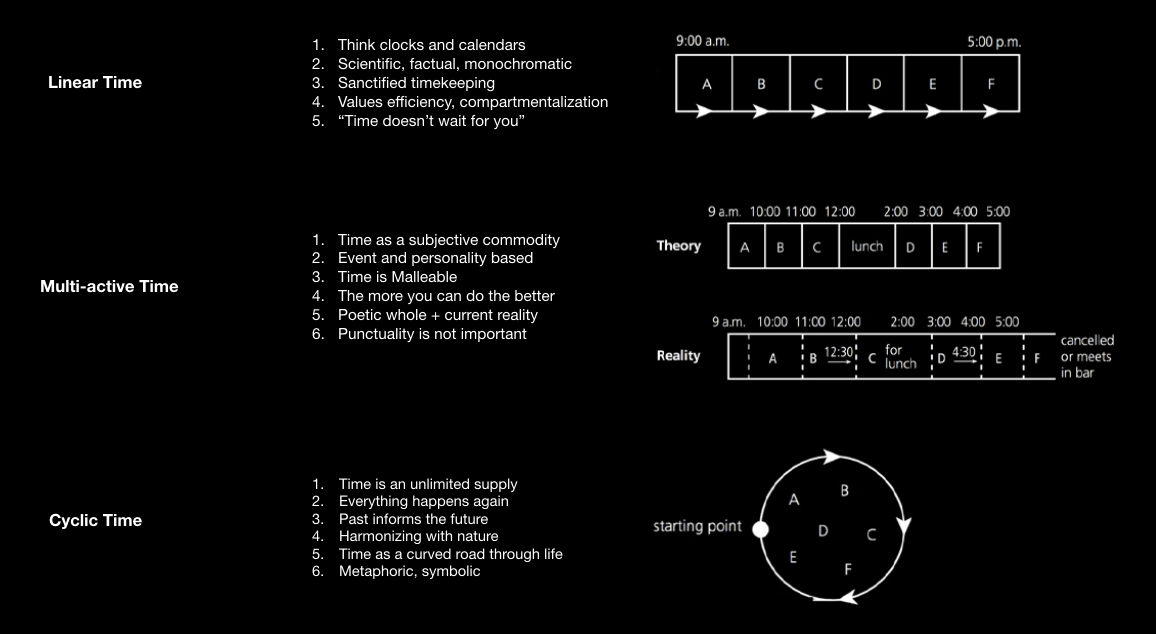Thesis: The Form of Time
How can we give form to something as abstract and elusive as time? Time is a fundamental universal framework through which we perceive events and objects to move in continued and ordered sequences. It is quantified into units of measurement from seconds and minutes to years and decades to be organized, arranged, and curated to the varying needs, intentions, habits, and circumstances of different people and institutions. These diverse and distinct characteristics form and mold the different ways in which individuals perceive and interact with time.
The project looks at Richard Lewis’s behavioral theory for how it categorizes temporal awareness into linear, multi-active, and cyclic types to understand how differently time can be perceived and used. These differences formed the basis of reimagining the established formats of familiar objects like planners and to-do lists that are commonly used to organize time and activity. By changing the familiar form of these objects, the behavior of the user and their perception of time is challenged.
https://bfacd.parsons.edu/2020/julie-yu-chen︎︎︎
Experimental, Motion graphics, Book design


Linear Time

Multi-Active Time

Cyclic Time

THE OBJECTS
These differences in the interpretations and movements of time as shown in the animations formed the basis of reimagining the established formats and methodologies of familiar objects like planners and to do lists that are commonly used to organize time. By changing the familiar form of the these objects, the behavior of the user and their perception of time time is challenged.

A wire bound planner with tabs for an entire year. The form of the object allows a seamless 360 rotation and literally mimics the circular model above. [cyclic]

A second interpretation of cyclic time. Accordian folds that guides its user from January to December and back to January. The motion going through the book becomes cyclic. [cyclic]

An index card planning system designed to be malleable and flexible. The established system is used and therefore dismantled by its user. [Multi-active]

A 24 hour to do list for 365 days a year divided into 6 rolls, 2 months each. The user can physically feel the loss of time in their hands as the planner is used. Heavy emphasis on the loss and waste of time. [Linear]